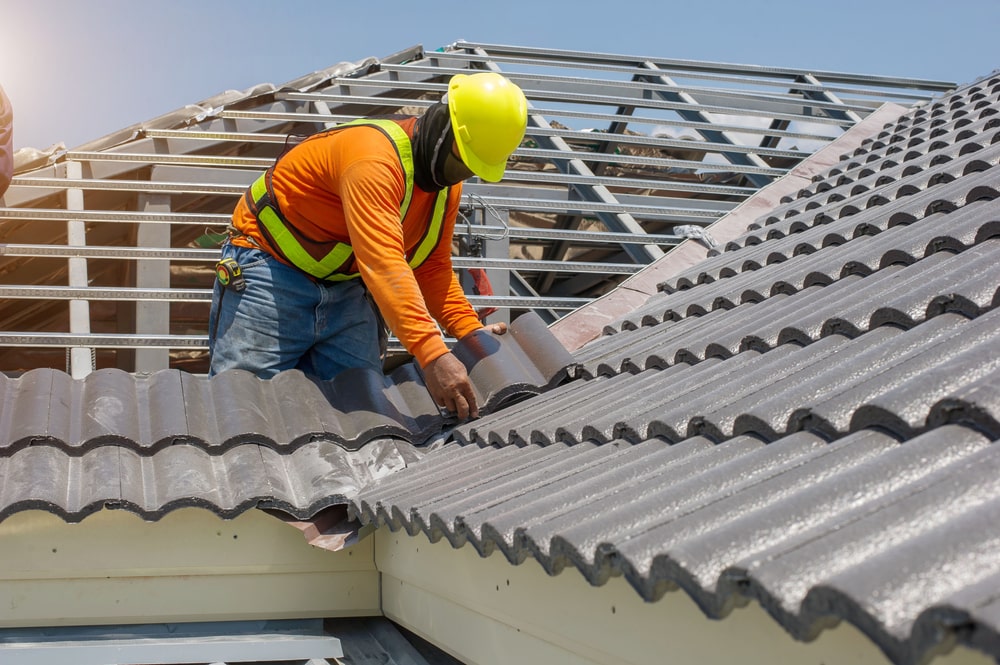Important Concerns to Ask Gainesville Roofing Companies Before Hiring
Important Concerns to Ask Gainesville Roofing Companies Before Hiring
Blog Article
Ideal Practices for Ensuring Appropriate Roof Covering Ventilation
Making certain appropriate roofing ventilation is crucial for the long life and effectiveness of a roof. A well balanced intake and exhaust air vent ratio, commonly 1:300, plays a critical duty, with intake vents ideally put at the reduced edge of the roofing for trendy air entry and exhaust vents at the height for warm air exit. Normal inspections to determine clogs and maintain clear air movement are critical. Keeping insulation away from vents is essential to avoid air flow restriction. Comprehending these fundamental elements establishes the stage for even more thorough insights into installation and upkeep practices that can considerably improve your roof's performance.
Understand Air Flow Fundamentals
Effectively comprehending ventilation essentials is crucial for making certain the durability and efficiency of roof. Effective ventilation alleviates moisture build-up and temperature extremes in the attic, both of which can bring about considerable architectural damage over time. A well-ventilated roofing system assists in protecting against usual concerns such as mold growth, wood rot, and ice dams, which can endanger the integrity of the roof covering materials and the underlying structures.
The primary goal of air flow is to help with the movement of air, enabling for a consistent exchange between the exterior and indoor environments. This equilibrium is achieved with a mix of intake and exhaust vents that function together to preserve ideal air movement. Intake vents, usually situated along the soffits or eaves, enable fresh air to get in the attic room area, while exhaust vents, often positioned at or near the roof ridge, enable warm, moist air to escape.
Key variables affecting the effectiveness of roofing air flow include proper positioning, appropriate sizing, and making sure that both consumption and exhaust vents are unblocked. Regular inspection and upkeep are important to identify possible clogs, damages, or inadequacies in the air flow system, thus safeguarding the roofing's efficiency and durability.
Kinds Of Roof Covering Vents
Roofing vents play a critical function in preserving reliable attic room ventilation and, by expansion, the overall health of the roof covering system. Various kinds of roofing system vents are available, each with special advantages tailored to particular roof requirements.

Soffit vents are installed under the eaves and operate in tandem with roof vents to make sure a balanced consumption and exhaust system. By enabling cooler air to get in from below, soffit vents assist in the expulsion of warm air with upper vents. Gable vents, situated on the outside walls of the attic room, deal an additional efficient service, especially in homes with saddleback roofs.
Evaluate Your Present Ventilation

Following, take into consideration the age and condition of your roofing products and ventilation elements. Older systems might not abide by existing building ordinance or may have worn away gradually, minimizing their efficiency. Conduct a comprehensive evaluation to determine any kind of indicators of damage, such as corrosion, damages, or gaps that might endanger the system's performance.
Furthermore, gauge the attic room temperature and moisture degrees. High temperature levels and moisture can show insufficient ventilation.
Setup Best Practices
Efficient installation of roof covering air flow systems is critical for guaranteeing ideal performance and durability. visit the website Proper setup begins with recognizing the specific ventilation needs of the roofing system and the structure it covers. This includes computing the appropriate ratio of intake to exhaust vents, usually sticking to the 1:300 guideline, which specifies one square foot of air flow for every 300 square feet of attic flooring space.

Consumption vents must be installed at the roofing system's lower why not try this out side, frequently in the soffits, to permit cool air to get in. Exhaust vents, on the various other hand, must be set up near or at the roofing system's optimal to promote the departure of warm, moist air.
Seal all vent links thoroughly to avoid air leakages and possible water seepage. Usage top quality products and follow supplier guidelines to ensure sturdiness and performance. Furthermore, integrating ridge vents with baffles can significantly enhance air movement performance by protecting against wind-driven rainfall and snow from getting in the attic.
Eventually, accurate installation of roofing ventilation systems mitigates potential concerns such as mold and mildew development, ice dams, and architectural damages, making certain the roof's integrity and the structure's overall health and wellness.
Normal Maintenance Tips
Consistency in upkeep methods is basic to making sure the long-lasting effectiveness of roof covering air flow systems. Normal assessments are critical, ideally performed biannually-- in the springtime and fall. Throughout these evaluations, ensure that vents are free of particles, nests, and other obstructions that might hinder air movement. Check for any type of signs of dampness buildup or mold, as these can show inappropriate ventilation or leakages (roofing companies).
Make use of a soft brush or a vacuum cleaner to eliminate dust and particles from consumption and exhaust vents. Be cautious not to damage the vent displays or louvers during the procedure.
Proper insulation is just as essential. Make certain that attic room insulation does not block the vents, as this can significantly limit airflow. If any insulation has click for source shifted or resolved, reposition or change it to maintain an efficient barrier.
Lastly, change any kind of damaged or missing components quickly. Damaged vents, split tiles, or deteriorated blinking can all add to poor ventilation and ought to be addressed right away. Routine upkeep ensures that the roofing air flow system operates optimally, therefore extending the life expectancy of the roofing itself.
Final Thought
Ensuring correct roofing air flow is extremely important for keeping the efficiency and toughness of a roof system. Adherence to the 1:300 intake and exhaust air vent proportion, coupled with the strategic positioning of vents, is vital.
A balanced intake and exhaust vent ratio, generally 1:300, plays a crucial function, with consumption vents ideally positioned at the reduced side of the roofing for trendy air entrance and exhaust vents at the peak for cozy air exit. Intake vents, normally situated along the eaves or soffits, allow fresh air to go into the attic room area, while exhaust vents, frequently located at or near the roof covering ridge, make it possible for warm, humid air to leave.
Soffit vents are set up under the eaves and work in tandem with roof vents to make certain a balanced consumption and exhaust system. By enabling cooler air to go into from below, soffit vents promote the expulsion of hot air through top vents. Adherence to the 1:300 intake and exhaust vent proportion, combined with the strategic placement of vents, is vital.
Report this page